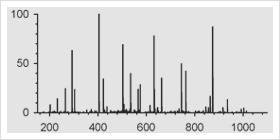In general, people like to know that their food is what the label says it is. It’s a real bummer to find out that beef lasagna you just ate was actually horsemeat. Plus, there are many religious, ethical and medical reasons to be cognizant of what you eat. Someone who’s gluten intolerant and Halal probably doesn’t want a bite of that BLT.
Labels don’t always accurately reflect what is in food. So how do we confirm that we are in fact buying crab, and not whitefish with a side of Vibrio contamination?
For the most part, it comes down to separation science. Scientists and technicians use various chromatographic methods, such as gas chromatography, liquid chromatography, and mass spectrometry, to separate the complex mixture of molecules in food into individual components. By first mapping out the molecular profile of reference samples, they can then take an unknown sample and compare its profile to what it should look like. If the two don’t match up, an analyst would assume that the unknown is not what it claims to be. Continue reading “Of Mice and Microbes: The Science Behind Food Analysis”

